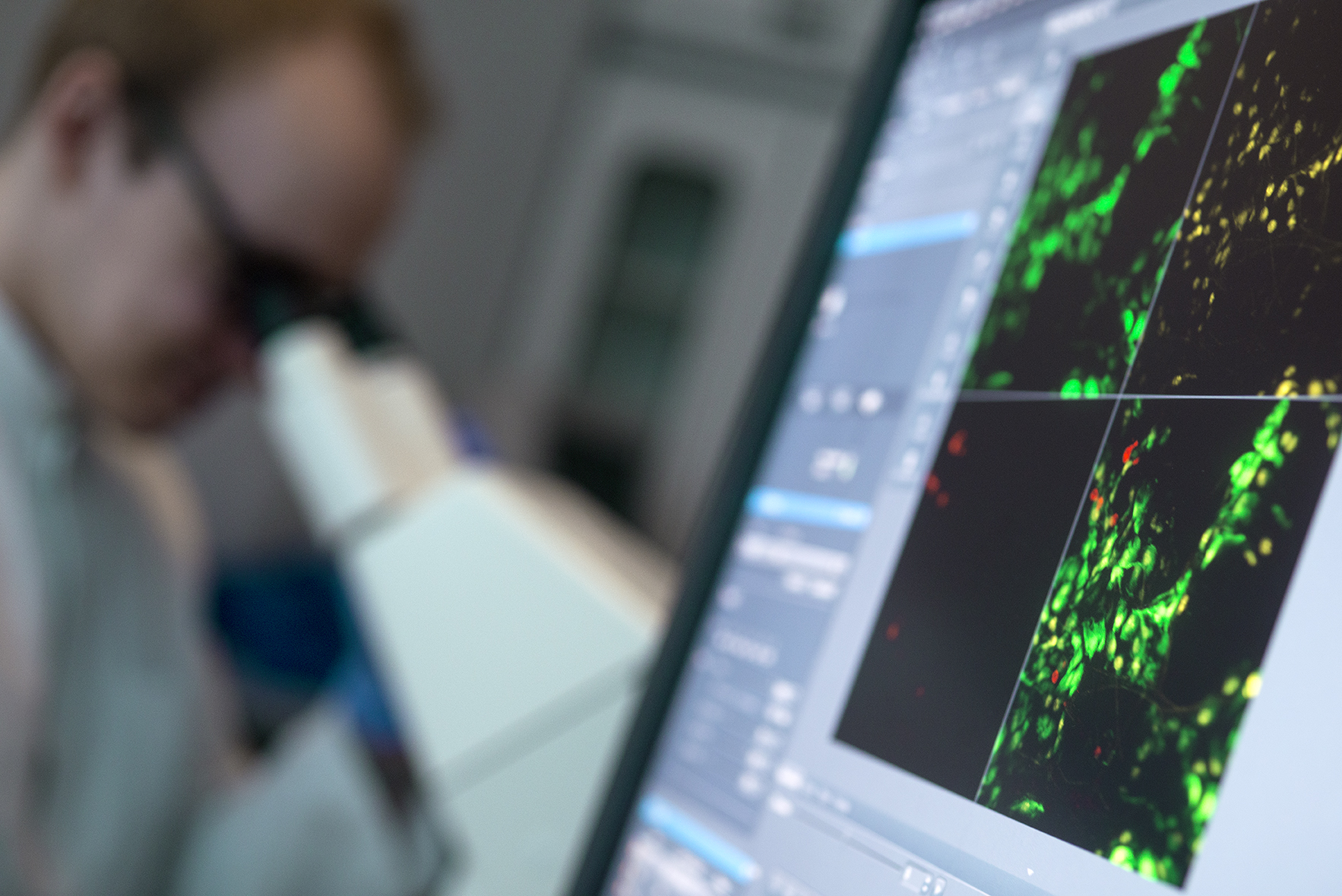In the research consortium iCAIR® (International Consortium for Anti-Infective Research) Fraunhofer ITEM is collaborating with partners – Griffith University's Institute for Glycomics (IfG) in Australia, the Institute for Clinical Biochemistry at the Hannover Medical School (Hannover, Germany), and TWINCORE, a joint venture of the Hannover Medical School and the Helmholtz Centre for Infection Research (Braunschweig/Hannover, Germany) – to develop new, urgently needed agents against respiratory tract infections. Since May 2020, the researchers have enhanced their spectrum to include the search for an effective drug against the coronavirus SARS-CoV-2. "In this research alliance we combine our complementary expertise and pool a broad spectrum of methods – from the identification of therapeutic targets and drug candidates via drug design and efficacy testing in preclinical models all the way to toxicological studies," says Professor Armin Braun, Fraunhofer ITEM Division Director of Preclinical Pharmacology and Toxicology and coordinator of the iCAIR® consortium.
Lead discovery using high-throughput methods and unique test systems
Striving to develop a drug for COVID-19 treatment, the researchers are first screening substance libraries for suitable drug candidates that stop SARS-CoV-2 infection, which means they are able to inhibit replication of this virus inside cells. "For this purpose, we made use of substance libraries available at IfG and HZI. In addition, for this project we have taken on board Fraunhofer IME with its branch lab ScreeningPort in Hamburg and its expertise in drug discovery based on automated high-throughput technology," explains Braun. First drug candidates have already been identified – the focus is on substances that either have been approved already for use in other diseases (i.e. repurposing candidates) or that are currently in the phase of preclinical or clinical testing.
The candidate drugs thus identified will subsequently be subject to chemical modification to optimize their efficacy and safety. IfG and Fraunhofer IME are experts for such chemical modifications. Efficacy and tolerability of the drug candidates will eventually be evaluated in sophisticated cell-based infection models at IfG and HZI and in human precision-cut lung slices, PCLS for short, at Fraunhofer ITEM.
The viable, immunocompetent lung tissue of the PCLS model enables detailed analysis of the biological and immunological responses to the virus in the deep lung – which is where the SARS-CoV-2 infection does the greatest harm. A unique human test system is thus available for safety and efficacy testing of novel medications.
Inhalation as a promising route of administration
The most promising drug candidates will eventually be developed further for inhaled administration. "We will systematically investigate inhaled administration of the candidate drugs, as the coronavirus-2 primarily infects the lungs and airways," explains Braun. "Administering therapeutics via the airways enables high local concentrations at the site of infection, reducing the required doses of active substance. In addition, systemic side effects can be minimized." Experts at Fraunhofer ITEM will test the drug candidates selected for inhaled administration in in-vitro and ex-vivo models to rule out any local cytotoxic effects and to identify the best candidates for further preclinical development. These tests will be performed in human airway epithelial cells or in PCLS. What is special about this approach: The ITEM scientists will use, among others, an in-house developed and patented in-vitro exposure system – P.R.I.T.® ExpoCube®. This system allows inhaled administration of the drug candidates into the lung to be mimicked and enables evaluation of pharmacological as well as toxicological effects.
Basic research on host-virus interaction – what is the role of sugars?
In a subproject, the iCAIR® partners will dedicate themselves more to issues of basic research: They want to find out why some people are more susceptible to SARS-CoV-2 and to severe courses of the infection and whether the efficacy of drugs is also different in these patients. It is known that glycosylation, i.e. the sugar structures on cell surface molecules, plays an important role in host-pathogen interactions. Therefore, the scientists will try to gain insights into the glycosylation patterns of different groups of patients by investigating respiratory cells and PCLS, also in order to identify potential targets for novel therapeutics.
"The iCAIR® consortium is very ambitious: together, we want to advance new active agents as quickly as possible from the lab into the preclinical phase. As a matter of fact, there is still a significant gap between the discovery of new agents and their further development into usable therapeutics, which we have to bridge even faster now with our combined synergies to curtail the COVID-19 pandemic," says Professor Mark von Itzstein, IfG Director and project manager of the Australian iCAIR® team.
 Fraunhofer Institute for Toxicology and Experimental Medicine
Fraunhofer Institute for Toxicology and Experimental Medicine